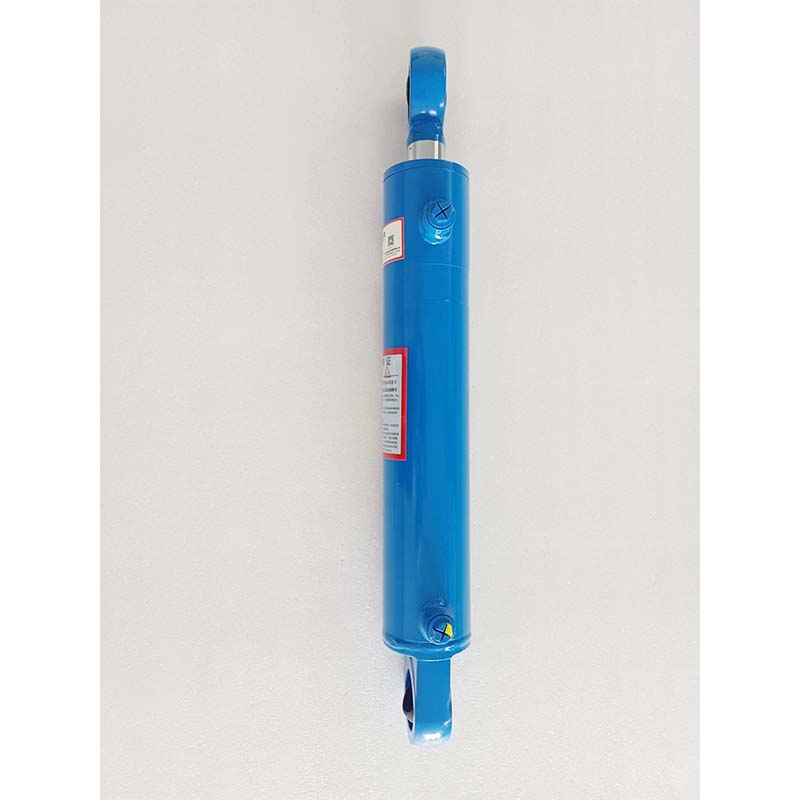Oct . 22, 2024 05:14 Back to list
Hydraulic Tilt Cylinder Solutions for Enhanced Performance and Versatility in Machinery
Understanding Hydraulic Tilt Cylinders Functionality and Applications
Hydraulic tilt cylinders are essential components in various machinery and equipment, providing the capability to pivot or tilt objects precisely. They play a critical role in industries such as construction, agriculture, and manufacturing. Understanding their functionality, design, and applications can significantly impact operational efficiency and effectiveness in these fields.
What is a Hydraulic Tilt Cylinder?
A hydraulic tilt cylinder is a type of actuating device that uses hydraulic fluid to create motion and force. It typically consists of a cylindrical housing, a piston, and hydraulic fluid. When hydraulic fluid is pumped into the cylinder, it forces the piston to move, thereby tilting the attached load or implement in a controlled manner. The design of hydraulic tilt cylinders allows for significant force generation in a compact space, making them ideal for applications requiring precise angle manipulation.
Working Principle
The working principle of hydraulic tilt cylinders relies on Pascal's law, which states that pressure applied to a confined fluid is transmitted undiminished in all directions. When hydraulic fluid is introduced into the cylinder through an inlet, it increases the pressure inside, pushing the piston to extend or retract. By controlling the flow rate and direction of the hydraulic fluid, operators can accurately control the tilt angle.
The performance of these cylinders can be influenced by various factors, including the size of the cylinder, the viscosity of the hydraulic fluid, and the pressure applied. Proper calculation and selection of these elements are critical for ensuring efficient operation and longevity of the cylinder.
Applications of Hydraulic Tilt Cylinders
Hydraulic tilt cylinders are used in a variety of applications
1. Construction Equipment They are commonly found in excavators, backhoes, and other heavy machinery. These cylinders allow for the tilting of buckets, blades, and other implements, providing operators with the ability to work at different angles and achieve various tasks, such as grading and excavating.
2. Agriculture In agriculture, hydraulic tilt cylinders are used in equipment such as plows, seeders, and harvesters. By facilitating the tilting of these implements, farmers can efficiently manage soil preparation, planting, and harvesting processes.
hydraulic tilt cylinder product

3. Industrial Applications In manufacturing settings, hydraulic tilt cylinders are essential for material handling and positioning systems. They help in the tilting of tables, conveyors, and other machinery, enabling operators to manipulate materials safely and effectively.
4. Transportation In vehicles such as dump trucks, hydraulic tilt cylinders are used to elevate and tilt the cargo bed, allowing for the efficient unloading of materials. This functionality is crucial for many logistics and construction operations.
Benefits of Hydraulic Tilt Cylinders
The advantages of using hydraulic tilt cylinders are numerous
- Precision Control They provide precise control over the tilt angle, enabling users to perform delicate operations with high accuracy.
- High Force Output Hydraulic systems can generate substantial force, making hydraulic tilt cylinders suitable for moving heavy loads.
- Compact Design Their design allows them to fit into tight spaces while still delivering significant power, which is a vital feature in many applications.
- Durability and Reliability Hydraulic systems are generally robust and designed to withstand harsh operating conditions, ensuring long-lasting performance.
Conclusion
Hydraulic tilt cylinders are integral to modern machinery across various industries. Their ability to provide controlled tilting and precise angular movements enhances the efficiency and effectiveness of operations in construction, agriculture, manufacturing, and transportation. As technology advances, the design and capabilities of hydraulic tilt cylinders will continue to evolve, offering even greater performance and reliability to meet the growing demands of industrial applications. Understanding these systems' functionalities and applications helps businesses optimize their machinery and workflow, ultimately leading to improved productivity and success.
-
Fork Lift Power Units - Hebei Shenghan | Efficiency, Reliability
NewsJul.13,2025
-
1.5-Ton Turbocharged Cylinder-Hebei Shenghan|Hydraulic Solution,Energy Efficiency
NewsJul.13,2025
-
Auto Hoist Power Units-Hebei Shenghan|Efficiency&Industrial Lifting
NewsJul.13,2025
-
Double Acting Power Units-Hebei Shenghan|Hydraulic Solutions,Industrial Efficiency
NewsJul.13,2025
-
1.5 Ton Lifting Cylinder 70/82-40-290-535 - High-Performance Hydraulic Solution | Hebei Shenghan
NewsJul.13,2025
-
Fork Lift Power Units - Hebei Shenghan | Efficiency&Reliability
NewsJul.13,2025
